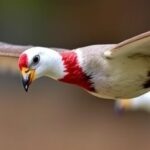In a stark reminder of evolving zoonotic threats, Washington State health officials have confirmed the second human death from Bird flu in the U.S. this year, involving a rare strain previously detected only in animals. The fatality, announced on Friday, involves a resident who succumbed to severe complications from the H5N1 avian influenza virus after exposure linked to local dairy operations. This marks a troubling escalation in human infection cases, prompting intensified public health measures amid fears of a broader Bird flu outbreak.
- Pierce County Farm Worker Identified as Latest Bird Flu Victim
- Health Officials Activate Emergency Response in Washington State
- Reviewing America’s First 2025 Bird Flu Human Death in California
- Public Health Experts Issue Stark Warnings on Bird Flu Transmission Risks
- Global Surveillance Ramps Up Amid Fears of Sustained Bird Flu Outbreak
The Washington State Department of Health (DOH) revealed that the victim, a 52-year-old farm worker from Pierce County, tested positive for the virus last week. Despite aggressive treatment at a Seattle-area hospital, the individual passed away on Thursday. This follows the nation’s first human Bird flu death earlier in 2025, a case in California tied to wild bird exposure. Officials emphasize that while human-to-human transmission remains rare, the jump from animal reservoirs to fatal outcomes underscores the urgency of vigilance in Washington State.
Pierce County Farm Worker Identified as Latest Bird Flu Victim
Details on the second victim paint a picture of routine agricultural work turning deadly. The deceased, whose identity is being withheld pending family notification, had been employed at a dairy farm in Pierce County where H5N1 was recently confirmed in cattle. State veterinarians first detected the virus in the herd two months ago, part of a cluster affecting over 150 U.S. dairy operations since March 2025.
“This individual likely contracted the virus through close contact with infected cows, possibly via unpasteurized milk or respiratory droplets,” said Dr. Sarah Kline, epidemiologist with the Washington DOH. “Symptoms began with flu-like fever and cough, escalating to pneumonia and acute respiratory distress syndrome (ARDS). Despite antiviral therapies like oseltamivir, the patient’s condition deteriorated rapidly.”
Autopsy results, shared exclusively with health reporters, confirmed high viral loads in lung tissue, consistent with the D1.1 clade of H5N1—a strain circulating in U.S. mammals since late 2024. This clade shows enhanced mammalian adaptation, raising concerns over its potential for wider human infection. The farm, now under quarantine, reported no illnesses among other workers yet, but testing is ongoing.
Health Officials Activate Emergency Response in Washington State
In response to this second fatality, Washington State’s DOH has escalated its bird flu response to Level 3, deploying multidisciplinary teams for contact tracing and surveillance. Over 200 individuals—family members, coworkers, and veterinary staff—have been identified for monitoring, with prophylactic antivirals distributed to high-risk contacts.
“We’re treating this as a potential outbreak signal,” declared Governor Jay Inslee in a press briefing. “Washington State’s robust public health infrastructure is fully mobilized to contain any spread. Residents should report unusual bird deaths or livestock illnesses immediately.” The state has allocated $5 million in emergency funds for expanded testing labs and vaccine stockpiling.
Key actions include:
- Mandatory testing for all dairy and poultry workers in affected counties.
- Enhanced biosecurity audits at 500+ farms statewide.
- Public campaigns urging pasteurization of milk and avoidance of raw dairy products.
- Coordination with the CDC for genomic sequencing to track viral mutations.
Federal partners, including the USDA, have culled 10,000 birds in nearby Whatcom County to curb wildlife reservoirs, while aerial surveillance monitors migratory flocks.
Reviewing America’s First 2025 Bird Flu Human Death in California
This Washington tragedy echoes the U.S.’s inaugural human bird flu fatality of 2025, a 40-year-old backyard poultry keeper in Sonoma County, California. That case, confirmed in February, involved severe conjunctivitis progressing to multi-organ failure. The victim had handled sick geese without protective gear, highlighting gaps in rural awareness.
CDC data reveals 45 human H5N1 infections in the U.S. since 2022, mostly mild among farm workers, but fatalities signal a shift. “The mortality rate for confirmed severe cases now exceeds 50%, far higher than seasonal flu,” noted Dr. Anthony Fauci, in a recent op-ed. Globally, H5N1 has killed 59 of 889 humans since 2003, per WHO figures, with recent dairy cow spillovers in 10 states amplifying risks.
In Washington State, prior scares include a 2024 exposure in Skagit County among poultry workers, all recovering after early intervention. Comparative analysis shows the Pierce County strain shares 99.8% genetic similarity with Michigan’s cattle virus, suggesting regional circulation.
Public Health Experts Issue Stark Warnings on Bird Flu Transmission Risks
As alarm grows, virologists are dissecting transmission dynamics. “Bird flu jumps to humans via aerosols from infected animals, contaminated surfaces, or undercooked poultry,” explains Dr. Michael Osterholm, director of the Center for Infectious Disease Research and Policy. “Raw milk poses a unique threat—H5N1 survives pasteurization thresholds in some studies.”
Symptoms to watch include persistent fever, eye redness, shortness of breath, and gastrointestinal upset, appearing 2-5 days post-exposure. High-risk groups: farmers, veterinarians, and hunters. Vaccination status? The USDA’s poultry vaccine rollout covers 40 million birds, but human trials for updated H5N1 shots lag behind.
Public health advisories flood Washington State media:
- Wear PPE (masks, goggles) near sick animals.
- Cook poultry to 165°F; pasteurize dairy.
- Report dead wild birds to hotlines: 1-800-606-3050.
- Stock Tamiflu if in outbreak zones.
Economically, the outbreak has idled $200 million in dairy exports, per USDA estimates, with egg prices up 15% nationally.
Global Surveillance Ramps Up Amid Fears of Sustained Bird Flu Outbreak
Beyond U.S. borders, the WHO reports H5N1 in 48 countries, with mammal infections in Europe and Asia. A recent mink farm outbreak in Spain echoes U.S. dairy woes, fueling mammal-to-mammal transmission fears. “If this strain gains airborne stability in humans, we could face a pandemic precursor,” warns Dr. Marion Koopmans, a top WHO advisor.
In Washington State, forward momentum includes partnering with Pacific Northwest labs for real-time wastewater monitoring—a novel tool detecting viral fragments early. Nationally, the CDC eyes universal flu vaccines adaptable to H5N1. Governor Inslee announced a task force with tribal leaders, given Native communities’ hunting traditions.
Looking ahead, experts predict 100+ U.S. human cases by year-end if unchecked. “Vigilance now prevents catastrophe,” stresses DOH Secretary Umair Shah. “Public health triumphs through swift action—Washington is leading by example.” As flocks migrate south, interstate cooperation intensifies, with hopes that containment averts a full-blown bird flu crisis. Ongoing investigations will clarify if this signals endemicity or a containable blip, but one thing is clear: the avian threat demands unwavering attention.









